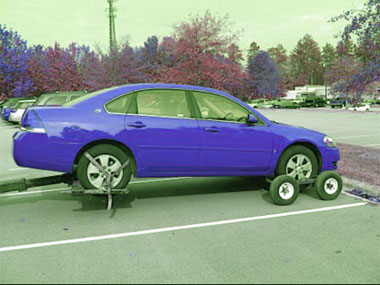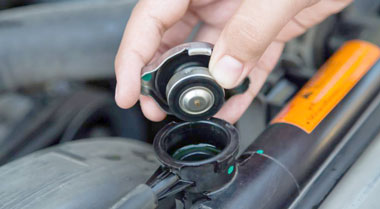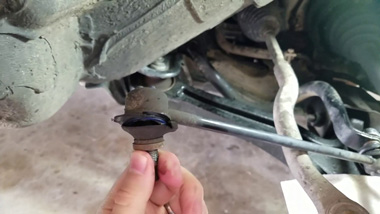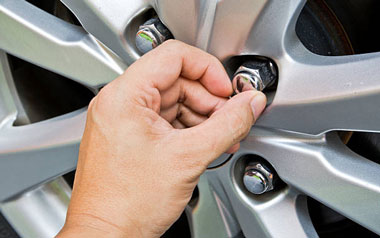
Are shims needed on brake pads? This is a question that many people have when they are trying to install new brake pads. The answer is yes, shims are definitely needed on brake pads.
Here’s why:
Shims act as a spacer between the pad and the caliper piston. By doing this, they help prevent the piston from becoming damaged when the brakes are applied.
Shims also help to keep the pad level and prevent it from rocking back and forth, which can cause premature wear. Finally, shims provide a small amount of cushioning to help absorb some of the vibration that can occur when braking.
Brake pads usually come with shims already attached, but sometimes they need to be replaced. If your brake pads are making noise or vibrating, it could be a sign that the shims need to be replaced.
What Happens If You Dont Use Brake Shims?
If you don’t use brake shims, your brakes may not work properly. The shims are designed to create a snug fit between the brake pads and the caliper, so if they’re not used, the pads may move around and not make proper contact with the caliper. This can cause braking problems, and in some cases, the pads may even become damaged or worn out prematurely.
Do Brake Shims Work?
If your brakes are making noise, it may be time to replace your brake shims. But do brake shims really work? Brake shims are designed to fill the space between the brake pad and caliper piston.
This helps reduce noise and vibration, as well as preventing metal-on-metal contact between the two parts. Brake shims also help keep the pads centered on the rotor, which can improve braking performance. So, do brake shims work?
Yes, they can help reduce noise and vibration, as well as prevent metal-on-metal contact between the brake pad and caliper piston. However, they will not improve braking performance if the pads are already misaligned or worn out. If you’re experiencing poor braking performance, it’s best to have your brakes checked by a professional mechanic.

Do Shims Correct Brake Pad Alignment?
Shims are used to fine-tune the alignment of brake pads. By adjusting the shims, you can change the distance between the pad and its caliper piston, which changes how close the pad is to the rotor. This is important because if your brake pads are not properly aligned, they will not make full contact with the rotor when you press on the brakes, which can lead to decreased braking power and increased wear on both the pads and rotors.
There are two types of shims: disc brake shims and drum brake shims. Disc brake shims are made of metal or plastic and fit between the caliper piston and pad. They come in a variety of thicknesses so that you can adjust the distance between the piston and pad as needed.
Drum brake shims are made of rubber or cardboard and fit between the backing plate and shoe. They act as spacers to keep everything evenly spaced out so that there is proper contact between all components when you press on the brakes. While it is possible to install new pads without changing or adjusting any shims, doing so may decrease braking performance due to improper alignment.
If you do need to install new pads, it is best to check your vehicle’s service manual for specific instructions on how to properly align them using shims.
Why Do Brakes Have Shims?
Shims are thin pieces of metal or plastic that are used to fill in small gaps between objects. In the case of brakes, shims are used to fill in the gap between the brake pad and the caliper. This ensures that the brake pad is level with the caliper, which helps to prevent braking problems.
There are a few reasons why shims are used in brakes. First, they help to keep the brake pad level with the caliper. If there is too much space between the two, it can cause problems with braking performance.
Second, shims help to reduce noise when the brakes are applied. Third, shims can help extend the life of your brake pads by preventing them from moving around too much and grinding against the caliper. Overall, using shims in brakes is a good way to ensure optimal performance and extend the life of your pads and calipers.
If you notice any problems with your brakes, be sure to have them checked out by a professional as soon as possible.

Why Are Good Brake Shims Important?
Can You Install Brake Pads Without Shims
If you’re like most people, you probably don’t think much about your car’s brake pads. But they play a critical role in keeping you safe on the road. So it’s important to know how to properly maintain them.
One of the most important aspects of brake pad maintenance is making sure they’re properly installed. And one question we often get asked is whether or not shims are necessary when installing brake pads.
The short answer is yes, shims are necessary when installing brake pads.
Here’s why:
Shims provide a vital function in the installation process by creating an even surface for the pad to sit on. This ensures that the brakes work evenly and efficiently.
Without shims, the pads can sit unevenly and cause problems with braking performance.
In addition, shims help to reduce noise and vibration from the brakes. They act as a buffer between the metal backing plate and caliper, absorbing some of the vibrations that can occur during normal operation.
This helps to keep your ride smoother and quieter.
So if you’re planning on replacing your own brake pads, be sure to use shims! It may take a little extra time upfront, but it’ll pay off in terms of safety and performance down the road.
What is a Shim Kit for Brakes
If you have ever wondered what those little metal plates are that sometimes come with your brake pads, they are called shims. Shims are used to create a uniform thickness between the pad and the caliper piston. This assures proper clearance when the brakes are applied so that the pistons can push the pads evenly against the rotor.
Shim kits usually come with four shims of different thicknesses to account for different variations in brake pads and calipers.
Brake Pad Shims Missing
If your brake pads are missing shims, it’s important to get them replaced as soon as possible. Shims are small metal or plastic discs that fit between the brake pad and caliper. They act as spacers and help to keep the brake pad level and prevent it from rattling.
Without shims, your brakes will make noise and may not work as effectively.
You can also ask a mechanic to take a look for you. Once you know that your brake pads are missing shims, it’s time to get them replaced. This is something that should be done by a professional mechanic.
They’ll be able to properly install new shims and ensure that they’re the right size for your specific vehicle. Don’t try to replace them yourself – this is a job best left to the experts!
Brake Pad Shim Kit
If you’re looking to improve your braking performance, one upgrade you can make is to install a brake pad shim kit. A brake pad shim kit helps to evenly distribute the pressure on the brake pads, which results in better braking power and reduced wear on the pads. In this article, we’ll show you how to install a brake pad shim kit on your vehicle.
Installing a brake pad shim kit is relatively easy and can be done in about an hour. The first step is to remove the old brake pads from your vehicle. Once the old pads are removed, clean up any debris or dirt that may be on the surface of the rotor.
Next, take a look at the caliper piston and make sure it’s clean and free of debris.
Now it’s time to install the new brake pad shims. To do this, simply place the shims between the caliper pistons and the back of the new pads.
Make sure that the shims are properly positioned so that they evenly distribute pressure on both sides of each pad. Once everything is in place, reassemble your brakes and test them out before hitting road!
Conclusion
If your brake pads are thicker than average, you may need to use shims to ensure a proper fit. Shims are thin pieces of metal or other material that act as spacers between the pad and caliper. This helps to prevent the pad from rubbing on the caliper, which can cause braking problems.
You can usually find shims at auto parts stores, or you can ask a mechanic to help you out.







































